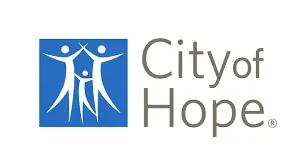
Novel Care Delivery Model Aims to Improve Cancer Care in Rural America

In an interview with Targeted Oncology, Eugene Ahn, MD, discussed the new care delivery model being tested at the Cancer Treatment Centers of America and how it can help patients with cancer in underserved communities.
Improving access to cancer care in rural communities is one step towards closing the disparities gap in the field, according to experts at the Cancer Treatment Centers of America (CTCA) who presented data around a new care delivery model during the recent 2021 American Society of Clinical Oncology (ASCO) Annual Meeting.
CTCA established a regional cancer center partnership with the overarching goal of combining on-site visits and telemedicine to increase access to care. Patients with cancer who are treated within the new delivery model have contact with the care team at a regional cancer center and with this contact, they can receive advanced surgeries, radiation, precision medicine, and entrance into clinical trials.
Initiation of care for patients who are treated within the care delivery model is within 3 business days from their time of referral. In another 3 days, providers had a treatment plan for the patient. Through testing this delivery model in a study, the CTCA physicians concluded that this is a promising strategy to reduce both rural and urban disparities in cancer care.
In an interview with Targeted Oncology, Eugene Ahn, MD, the deputy medical director of Clinical Research at CTCA in Chicago, discussed the new care delivery model being tested at CTCA and how it can help patients with cancer in underserved communities.
TARGETED ONCOLOGY: Can you briefly discuss the difference between oncology care in rural communities in comparison to metropolitan areas? What are the key issues oncologists face?
Ahn: As we prioritize health equity in this country, this is one important area. We know that about 1/5 of the US population resides in rural areas, but then only 1/10 of our physicians practice in rural areas. There are a lot of reasons for this. According to ASCO, they found that 3% of our medical oncologists’ practice in rural areas, while 20% of the US population lives in these rural areas. They even found 70% of US counties do not even have a practicing medical oncologist. So, this creates many inequities. The inequities that have been highlighted in past publications before ours are time to travel for care, financial burden, and whether they're getting the best standard of care. All these things are affecting health equity issues.
Can you explain the delivery model you discussed during the 2021 ASCO Annual Meeting? What are the key goals?
The telehealth medicine initiative that we initiated had a primary goal of helping patients with speed to care. One thing that we consistently saw in our experience as a destination cancer center was a lot of patients are frustrated with too much time in limbo, not knowing what they need to do to treat their cancer. What we did was we developed relationships with 2 community centers, 1 in Southern Illinois and 1 in Iowa, and we offered a telemedicine appointment. The was meant to offer direct input from a medical oncologist relatively early in a patient’s diagnosis to help coordinate the appropriate workup. It was also meant to make sure that the appropriate tests are done, and appropriate staging is done. This way, we can bridge them to the best possible therapy.
A study was conducted to test your model. What the results of the study?
The results we shared at the ASCO meeting were that we had 14 patients who already experienced this telemedicine initiative, and we were happy to report that we had a retention rate of 100%. Also, turnaround time from treatment plan to the actual treatment was within 6 business days, and we had a total of 62 oncology telehealth appointments. We ended up reducing patient travel for by 12,705 miles and 310 travel hours.
If you do the math, it's almost 20 hours less travel per patient, and saved $7,380 in travel costs and accommodation. Clearly, just from this small cohort, we can demonstrate that telehealth offers some tangible benefits and changes speed to care, which correlates to quality life in our experience.
What conclusions were drawn based on this research?
Telehealth is 1 of the technological solutions that we have available. One of the blessings in disguise from the pandemic is that because we are now have a much looser criteria to offer these services, it gave cancer centers the ability to innovate and see what we could do to help these rural communities. So, we reported this abstract mainly to document that telehealth can improve patient care, and patient access to care. This is just one of the many tools that we have to help bridge the health inequities in this country.











































